Fujitsu Siemens PRIMERGY TX150 S4 Review
Fujitsu Siemens PRIMERGY TX150 S4
If you need a fast, quiet and upgradable server for your office, Fujitsu-Siemens has the answer.
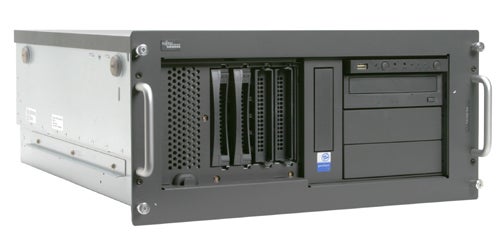
Verdict
Key Specifications
- Review Price: £2265.00
Intel’s Pentium D processor is proving a top choice in the entry-level and SMB (small to medium business) server market as it delivers dual processing capabilities but at a price point close to that offered by Pentium 4 based systems. Many businesses looking to dish up basic services such as simple file and print, email and Intranet to their employees neither need nor are prepared to pay a premium for Xeon equipped servers so the Pentium D looks a much more viable option.

It has to be said that Fujitsu Siemens is not a technological trendsetter preferring to follow and learn from others’ successes and mistakes rather than lead but it still manages to deliver one of the most comprehensive ranges of server products available. Up until now the PRIMERGY TX150 family represented its small business single processor server but the latest TX150 S4 delivers dual core processing along with an interesting specification and all for a reasonable price.
Aimed at a wide range of applications the TX150 S4 targets scenarios such as remote offices, small businesses with minimal on-site IT support and general workgroup file and print services. In these environments build quality needs to be good and the TX150 S4 looks well up to the job. The server is offered in both rack and pedestal versions and we were supplied with the former. If you opt for the pedestal version it’ll come with the trademark silver mesh panels which protect access to the front bays and can be locked shut. Storage options are good as the front drive bay has room for up to four hot-swap hard disks and the price of the review system includes a duet of 73GB Seagate Cheetah 10K.7 Ultra320 hard disks. The server is offered in a SATA (Serial ATA) variant as well and we would recommend this to businesses where the priority is high storage capacity rather than performance.
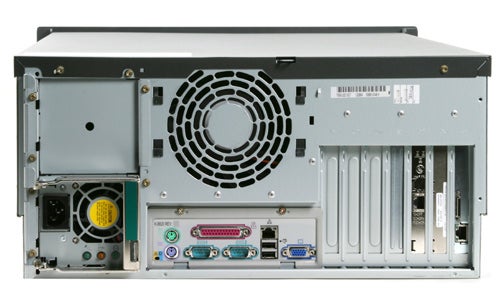
Easy access is afforded to all major components thanks to a tidy internal design. One area where Fujitsu Siemens has been concentrating is processor cooling as the 2.8GHz module is endowed with one of the largest passive heat-sinks we’ve ever seen. A metal plate bolted to the processor feeds a group of copper pipes filled with a fluid to help with heat dissipation. These disappear into a huge block of cooling fins making for a massive sculpture that rises no less than 17cm from the motherboard. The upshot of this arrangement is that once the main cooling fan has settled down after initial power up the server literally whispers making it ideally suited to general office duties.
Fast PC2-4200 memory is supported and the price includes 2GB which can be expanded up to 8GB. Storage features on the review model get even better as the embedded Ultra320 SCSI controller is connected directly to the hard disk backplane but the review system also came equipped with an LSI MegaRAID ZCR (zero channel RAID) PCI-X card. This takes over the SCSI channel and brings RAID-0, -1, -10, -5 and -50 to the table for greater fault tolerance. Expansion options are good as you get x1 and x8 PCI Express, three 32-bit PCI and two PCI-X slots in total. Along with the embedded Broadcom Gigabit Ethernet adapter you also get an extra Intel Gigabit Ethernet card. Usefully, the server comes with Broadcom’s Advanced Control Suite utility which allows both adapters to be teamed together into a single, virtual network connection where the load can be balanced across them both, so if one fails the network connection won’t be lost.
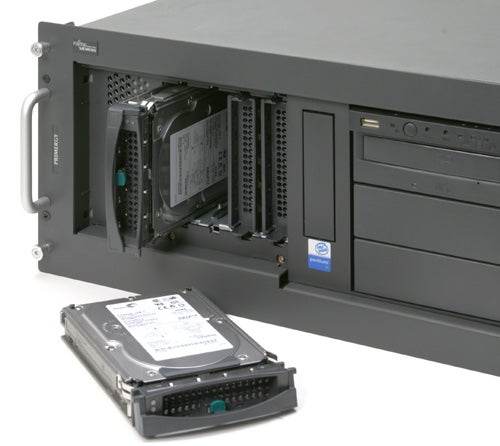
Fujitsu Siemens impresses with its remote management features as you get its standard ServerView software bundle included. The suite accesses any system running the relevant agent component over SNMP (simple network management protocol) and provides a detailed report on operational information. You can monitor processors, temperatures, voltages, fans and any expansion cards and tie in alarms or errors to notifications by email, network messages and pagers. The power supply can also be remotely accessed so you can schedule server power cycles and use a watchdog timer to automatically reboot the server if it hangs. The ASR (automatic server restart) tool allows you to set thresholds on fans speeds and temperatures and force a server shutdown if these reach critical values.
There’s much more as the system also came with a RemoteView Service Board (RSB) allowing the server to be accessed from a browser on another system irrespective of its operational status. This is a slick remote access feature as the board has its own processor, memory, network port, power source and operating system so it can act autonomously of the server. It interacts with the motherboard’s embedded IPMI (intelligent platform management interface) 1.5 controller allowing an administrator on a remote system to power the server on and off, schedule power cycles and monitor critical components.
”’Verdict”’
The TX150 S4 looks a more costly alternative when compared with Dell’s PowerEdge 830 but it does offer equally good remote management tools and the extra outlay gets you top build quality plus RAID protected SCSI storage, while the unique cooling design makes for virtually silent running.
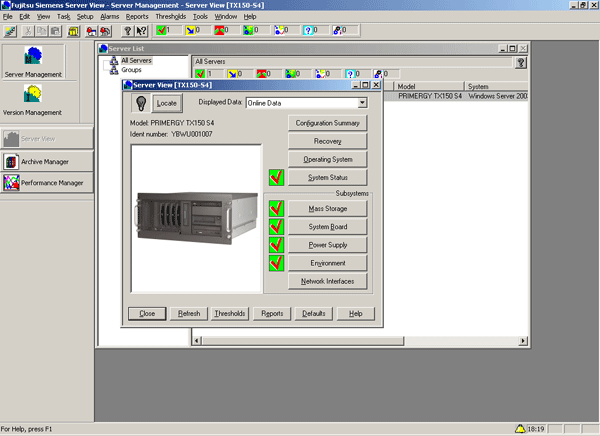
The Windows ServerView software can be used to manage and monitor any PRIMERGY server with the relevant agent installed.
—-
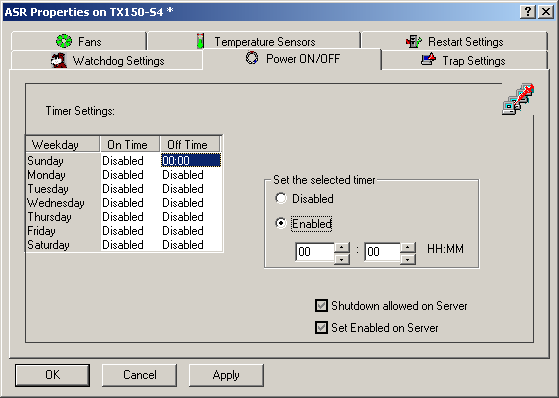
ASR allows the server to be shutdown or powered on at schedules intervals on selected days of the week.
—-
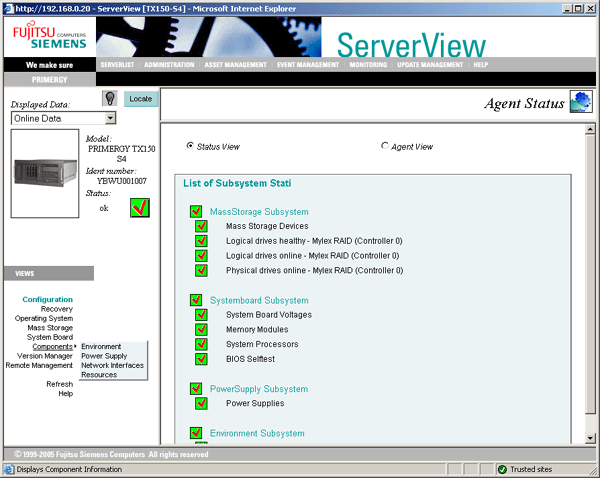
The web component of ServerView allow the server to be remotely accessed using a browser and provides plenty of useful information.
—-
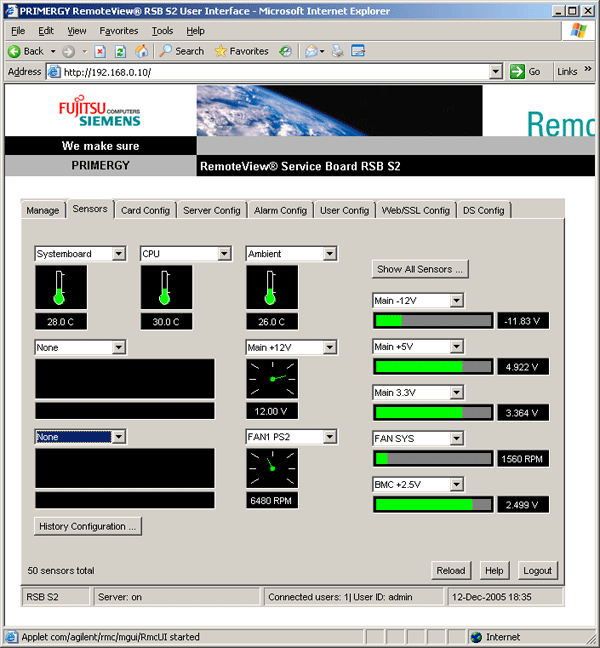
The RSB allows you to control the server irrespective of its condition and monitor vital signs as well.
—-

